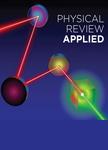版权所有:内蒙古大学图书馆 技术提供:维普资讯• 智图
内蒙古自治区呼和浩特市赛罕区大学西街235号 邮编: 010021

作者机构:Department of Physics and Electronics Graduate School of Engineering Osaka Prefecture University Sakai Osaka 599-8531 Japan NanoSquare Research Institute Osaka Prefecture University Sakai Osaka 599-8531 Japan Muon Science Laboratory and Condensed Matter Research Center Institute of Materials Structure Science High Energy Accelerator Research Organization (KEK) Tsukuba Ibaraki 305-0801 Japan Department of Materials Structure Science The Graduate University for Advanced Studies Tsukuba Ibaraki 305-0801 Japan Division of Quantum and Radiation Engineering Osaka Prefecture University Sakai Osaka 599-8570 Japan Materials and Life Science Division J-PARC Center Japan Atomic Energy Agency Tokai Ibaraki 319-1195 Japan Advanced ICT Research Institute National Institute of Information and Communications Technology 588-2 Iwaoka Nishi-ku Kobe Hyogo 651-2492 Japan Advanced Industrial Science and Technology Tsukuba Ibaraki 305-8568 Japan Computing Research Center Applied Research Laboratory High Energy Accelerator Research Organization (KEK) Tsukuba Ibaraki 305-0801 Japan
出 版 物:《Physical Review Applied》 (Phys. Rev. Appl.)
年 卷 期:2018年第10卷第4期
页 面:044044-044044页
核心收录:
基 金:MLF, (2015A0129, 2015P0301) Materials and Life Science Experimental Facility Japan Society for the Promotion of Science, JSPS, (16K05456) Japan Society for the Promotion of Science, JSPS University of Tokyo
主 题:Solid-state detectors Neutron imaging Neutron scattering Superconducting devices
摘 要:We demonstrate the development of a high-speed neutron-imaging system via a solid-state superconducting detector. Our developed system, a current-biased kinetic-inductance detector (CBKID), operates in a delay-line mode to identify the position of a local hot spot in terms of four different arrival time stamps at the ends of the delay lines. Our detector comprises X and Y superconducting Nb meander lines, which are fed by a weak dc current, and a B10 conversion layer, which converts a neutron into two charged particles. The high-energy light ions (He4 or Li7) in the B10(n,α)7Li reaction are able to create two hot spots simultaneously in the X and Y meanders. A pair of electromagnetic-wave pulses are generated at the hot spot and signals of different polarities start propagating on each of the X and Y meanders toward the ends. The position of the original hot spot is determined by the difference in arrival time of the two pulses at the two ends. To measure the arrival times of the pulse signals, we developed a set of analog signal discriminators from the preset threshold levels using a time-to-digital converter (TDC), which is able to record the timing of the propagated pulses with 1-ns resolution over a time frame of 4.2 s. We successfully reconstructed the neutron image of a test pattern with a spatial resolution of 22 μm and a detection rate tolerance of a few 10 MHz/cm2.